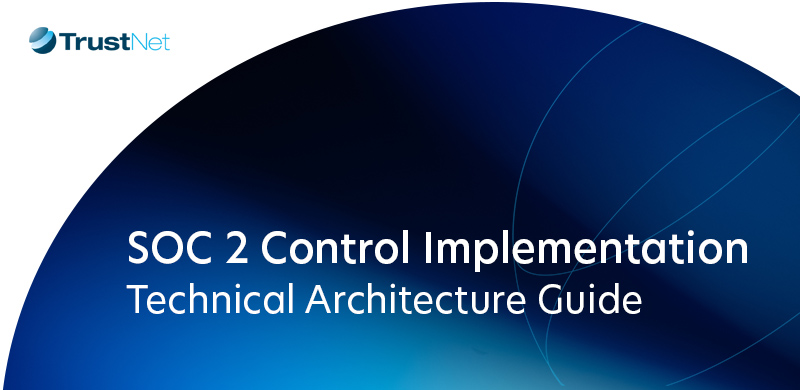Demystifying HITRUST CSF Controls: A Step-by-Step Guide to Compliance

For healthcare organizations, where the stakes include financial loss and the potential compromise of patient health information, adherence to HITRUST CSF controls is crucial. Compliance with this framework safeguards against data breaches and aligns organizations with federal and state regulations, ensuring they meet the highest data security and privacy.
This guide aims to equip you with a foundational understanding of the HITRUST CSF controls and a roadmap to confidently navigate the path to compliance.
Understanding HITRUST CSF Controls
The HITRUST CSF organizes its controls into 19 categories, each addressing different information security and privacy aspects. Here’s a closer look at some of these categories:
— Information Protection Program: The Information Protection Program domain helps an organization establish and maintain a robust and effective ISMS that can protect sensitive data and meet the expectations of its customers, partners, and regulators. It defines the roles and responsibilities of the information security personnel, the scope and objectives of the ISMS, the risk assessment and treatment processes, the compliance requirements, and the performance measurement and improvement mechanisms.
— Endpoint Protection: Pertains to the systems and processes that defend against viruses, malware, and other threats that target the endpoints of a network, like laptops, workstations, servers, and storage devices. This domain includes controls for intrusion detection and prevention, patches, firewalls, antivirus software, and software updates. The Endpoint Protection domain plays a crucial role in safeguarding an organization’s sensitive data and network resources from unauthorized access, modification, or destruction.
— Portable Media Security: Covers the security requirements for mobile storage devices, such as USB drives, CDs, DVDs, backup tapes, and other removable media that can store sensitive data. It includes controls for encryption, access control, labeling, disposal, and inventory of portable media. The Portable Media Security domain helps organizations prevent data loss, theft, or leakage from portable media devices.
— Mobile Device Security: This control deals with security requirements such as encryption, access control, remote wipe, device locking, and device inventory for network devices like tablets, smartphones, and laptops. The Mobile Device Security domain is essential for organizations to prevent data loss, theft, or leakage from mobile devices.
— Wireless Security: The Wireless Security domain covers the security requirements for wireless networks, such as Wi-Fi, Bluetooth, and cellular networks, that can transmit or receive sensitive data. It includes controls for encryption, authentication, authorization, monitoring, and configuration of wireless networks. The Wireless Security domain helps an organization protect its sensitive data and network resources from unauthorized access, interception, or disruption.
— Configuration Management: Covers the security requirements for the identification, control, and maintenance of an information system’s hardware and software components. The Configuration Management domain helps an organization to ensure the integrity, availability, and performance of its information system and prevent unauthorized or unintended changes.
— Vulnerability Management: Covers the security requirements for identifying, analyzing, and remedying the weaknesses and flaws affecting an information system’s hardware and software components. The Vulnerability Management domain helps an organization to reduce the risk of exploitation, compromise, or breach of its sensitive data and network resources.
— Network Protection: Includes controls for network segmentation, firewall configuration, network access control, network monitoring, and network testing. The Network Protection domain helps an organization protect its sensitive data and network resources from unauthorized access, interception, or disruption.
— Transmission Protection: Focuses on securing data transmissions with encryption and secure communication protocols.
— Password Management: Enforces strong password policies and practices to protect against unauthorized access.
— Access Control: Includes controls for user registration, password management, role-based access, multifactor authentication, and audit logging. The Access Control domain helps an organization protect its sensitive data and network resources from unauthorized access, compromise, or breach by enforcing strong access policies.
— Audit Logging and Monitoring: Requires collecting, analyzing, and monitoring logs to detect and respond to security incidents.
— Education, Training, and Awareness: Emphasizes the importance of security training and awareness programs for all staff members. The Education, Training, and Awareness domain helps an organization reduce the risk of human errors, negligence, or malicious actions that may compromise the security and privacy of sensitive data.
— Third-Party Assurance: The Third-Party Security domain covers the security requirements for the selection, assessment, and management of the third parties that provide services or products to an organization or that have access to the organization’s network or sensitive data.
— Incident Management: Outlines procedures for effectively responding to and managing security incidents. The Incident Management domain helps an organization minimize the impact, cost, and duration of incidents or breaches and improve its security posture and resilience.
— Business Continuity and Disaster Recovery: Ensures the organization can continue operations and recover from disruptions due to security incidents.
— Risk Management: Involves identifying, assessing, and managing risks to the organization’s information assets.
— Physical & Environmental Security: Protects physical assets and environments where information is processed or stored.
— Data Protection and Privacy: Covers the security requirements for collecting, using, disclosing, retaining, and disposing of personal data in compliance with applicable laws and regulations, such as GDPR and CCPA. The Data Protection and Privacy domain helps an organization protect the privacy and rights of the individuals whose data it processes and ensure transparency and accountability for its data practices.
Each category within the HITRUST CSF comprises specific controls and requirements tailored to address the unique risks associated with the healthcare sector. Organizations must assess risk factors and implement the applicable controls to meet the framework’s standards.
Aligning with HITRUST CSF controls is not just about checking off compliance requirements; it’s about establishing a culture of security that permeates every aspect of an organization.
Step-by-Step Guide to Achieving Compliance
Achieving HITRUST certification and compliance requires navigating through a series of steps, each tailored to ensure an organization’s information security frameworks align with the stringent criteria established by HITRUST. Here, we delve into the critical phases involved in the certification process.
I. Initial Assessment and Readiness Evaluation
HITRUST compliance begins with an in-depth initial assessment and readiness evaluation. This essential phase helps organizations gauge their existing security stance against HITRUST’s benchmarks. It includes:
Comprehensive Scope Determination: Identifying the exact scope of the evaluation is paramount. This includes:
- Pinpointing relevant business segments, physical sites, and information systems.
- Grasping the organizational processes and regulatory obligations that are relevant to the evaluation.
- Assessing the organization’s capabilities, the maturity level of its security and privacy protocols, and its risk acceptance threshold.
Systematic Documentation of Systems and Processes: Organizations must thoroughly document the systems and procedures within the defined scope. This detailed documentation lays the groundwork for all subsequent certification efforts.
II. Gap Analysis and Remediation Planning
After completing the initial evaluation, organizations need to conduct a gap analysis to identify any discrepancies between their current practices and the HITRUST standards. This is a crucial step in the HITRUST certification process. During this phase, organizations should break down the scope into individual components, such as data centers or specific procedures within the organization. Each component must be evaluated separately using the HITRUST CSF control maturity scoring rubric. The control implementation should be assessed based on specific maturity levels. This will help organizations identify the gaps that need to be addressed to meet the HITRUST certification requirements.
Gap Identification: Highlight areas where the organization’s security measures fall short of HITRUST expectations.
Formulating Remediation Strategies: Crafting specific, actionable strategies to bridge these gaps. This includes setting priorities for remediation activities based on the criticality of the gaps and the organization’s unique context.
III. Implementation of Necessary Controls and Documentation
The homestretch of the certification process involves enacting the required controls and meticulously documenting these actions. This phase ensures that all previously identified gaps are rectified and the organization’s security protocols fully align with HITRUST’s requirements. Critical considerations here include:
Control Implementation: Following the remediation plans by applying the requisite security measures. Adjustments might be made to existing policies, new technologies may be introduced, or enhancements could be made to current procedures.
Detailed Documentation: Precise and thorough documentation of the control implementation process is vital for showcasing compliance during the HITRUST evaluation.
By meticulously following these steps, organizations can achieve certification and significantly strengthen their defenses against cyber threats.
Learn more about our HITRUST services Here
Common Challenges and Solutions
Organizations striving for HITRUST CSF compliance often face several recurring challenges:
- Complexity of the HITRUST CSF: While beneficial, the framework’s comprehensive nature can also be overwhelming due to its extensive list of controls and requirements.
- Resource Constraints: Limited financial, personnel, and time resources can impede the ability to implement necessary controls and documentation efforts fully.
- Evolving Regulatory Requirements: Keeping up with the constant changes in healthcare regulations and HITRUST standards demands continuous vigilance and adaptation.
- Technical Challenges: Implementing the specific technical controls HITRUST requires can be daunting, especially for organizations with outdated systems or those needing IT expertise.
Despite these obstacles, there are effective strategies that organizations can employ to navigate the compliance process more smoothly:
- Break Down the Compliance Process into Manageable Phases: Break down the process into smaller, manageable tasks and focus on completing each phase thoroughly before moving on to the next.
- Leverage Expert Guidance and Tools: Consider partnering with HITRUST-certified assessors like TrustNet, who can provide expert guidance and tools throughout the compliance journey.
- Prioritize Based on Risk Assessment: Prioritizing efforts based on this assessment can ensure that resources are allocated effectively, first addressing the most significant risks.
- Stay Informed About Regulatory Changes: Establish a process for regularly reviewing regulatory updates and HITRUST CSF amendments.
- Invest in Training and Awareness Programs: A well-informed team will likely adhere to necessary protocols and contribute positively to compliance.
- Embrace Technology Solutions: Implement technology solutions that can automate and streamline parts of the compliance process, such as continuous monitoring tools, compliance management software, and secure communication platforms.
Remember, the journey to HITRUST compliance is a marathon, not a sprint. With careful planning, dedicated resources, and a commitment to continuous improvement, organizations can achieve compliance and significantly enhance their information security posture.
Benefits of HITRUST CSF Compliance
A. Enhanced Data Security and Protection of Sensitive Healthcare Information
HITRUST CSF provides a robust set of controls designed to address healthcare organizations’ unique risks. Compliance ensures that an organization has implemented these comprehensive measures to protect sensitive information from threats and vulnerabilities.
B. Improved Trust and Credibility with Partners and Stakeholders
Achieving HITRUST CSF compliance signals to patients, partners, and regulators that an organization is serious about protecting health information, thereby enhancing its reputation. In an increasingly competitive healthcare market, HITRUST certification can differentiate an organization from its peers, making it a more attractive partner for business associates and clients.
C. Potential Cost Savings through Efficient Compliance Management
By integrating requirements from multiple regulatory standards, HITRUST CSF allows organizations to streamline their compliance efforts, reducing the need for redundant audits and assessments. Implementing the robust security measures required for HITRUST compliance can significantly reduce the likelihood of data breaches, which are costly in terms of financial impact and reputational damage.
In summary, HITRUST CSF compliance fortifies an organization’s cybersecurity defenses, enhances its standing in the healthcare industry, and can lead to significant cost efficiencies. By investing in HITRUST compliance, healthcare organizations can achieve a competitive edge while ensuring the utmost protection for the sensitive health information they handle.
Embracing HITRUST CSF Compliance
The HITRUST CSF is a critical framework for organizations aiming to protect health information amidst sophisticated cyber threats and stringent regulatory demands. This endeavor exemplifies a commitment to exemplary data protection practices and instills confidence among patients, partners, and stakeholders.
For organizations looking for guidance and support, TrustNet offers a comprehensive suite of services tailored to simplify the compliance journey. With deep expertise in the HITRUST framework and a track record of helping organizations navigate the nuances of compliance, TrustNet stands as a valuable ally.
For those ready to take this critical step, TrustNet is here to guide you through every step, ensuring a smoother, more efficient path to compliance.




